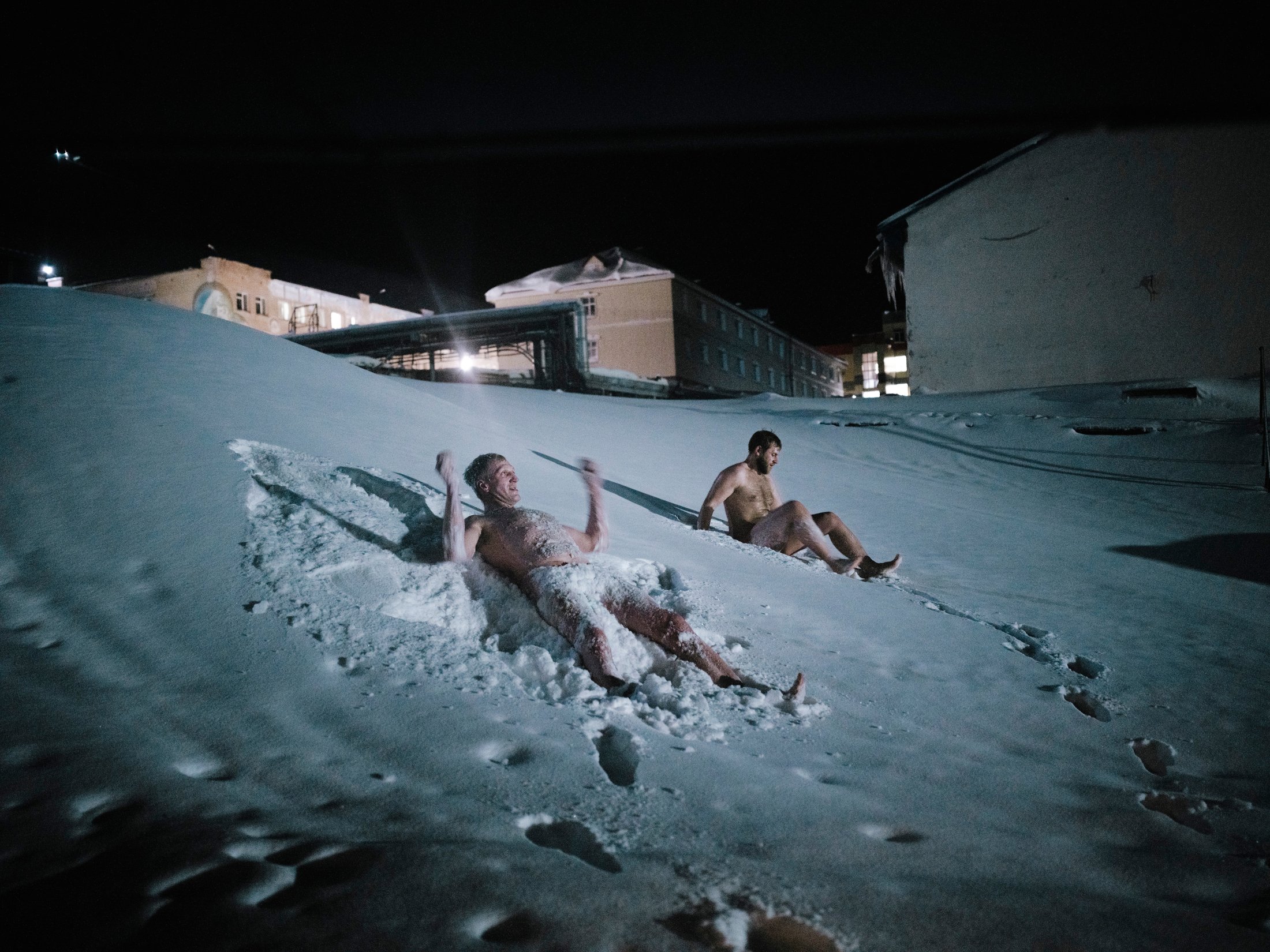Mario Heller, a Berlin-based Swiss photographer, has a professional antenna for under-the-radar locations, an inquisitiveness which eventually guided him to Barentsburg—a small and close-knit community of around 400 inhabitants in the Arctic region.
Approximately 2000 km north of Norway’s mainland, this small town on Spitsbergen, the largest and the only permanently populated island of the Svalbard archipelago, is surrounded with breathtaking land—and seascapes—but its sheer remoteness is what motivated Heller the most to initiate a two weeks excursion, which resulted in the series Arctic Dreams.

As Heller writes in an extensive and insightful essay supporting the recently-produced body of work, Barentsburg is so far out of the way “that reaching it is only possible by helicopter, snowmobile, or ship—if the extreme weather allows it at all.” Despite being a highly challenging environment, its unique conditions nevertheless make for a strong appeal: with its fjords, glaciers, mountains and rolling tundra, the Arctic contains endless opportunities for nature lovers, hikers and photographers, while the Spitsbergen Treaty of 1920 also allows peoples of the 46 signatory states to live and work here without visa.

Barentsburg, named after Dutch explorer Willem Barentsz who discovered Svalbard in 1596, was once home to over 1,000 people, mainly contractors for Trust Arktikugol, a Russian state-owned coal mining company. Post Cold War, many of the buildings became uninhabited, and some were even left to decay. Still, the majority of contemporary inhabitants remain active in the mining industry; mainly contractors of Ukrainian descent, specifically from the Eastern regions closest to Russia. Heller also encountered some individuals, mostly young adults from Russia’s larger cities, who have found employment in polar tourism—a niche industry in decline.

Remote as it may seem, Svalbard’s unique status as a sovereign territory of Norway with opportunities for foreign nationals, Russia’s presence on the territory and its interests at sea, as well as the archipelago’s proximity to critical Russian military locations make it a potential geopolitical flash point. The conflict in Ukraine, several thousands of kilometers away, has only enhanced political tension which also affects the social dynamics on Spitsbergen. “Since the beginning of the conflict, people have been advised not to visit Barentsburg,” Heller notes, “while the Russian community believes that Norwegian companies are using politics to gain an economic advantage.”

Certainly, everyone who lives in Barentsburg has his or her personal perspective on the armed conflict in Ukraine yet, far away from the warzone, the theme is only discussed when brought up by visiting outsiders. “In general, they are mainly concerned with maintaining a social construct of their own and don’t shy away from any sort of challenge,” Heller explains. Much in keeping with Willem Barentsz and his crew, when they became stranded on Spitsbergen so many centuries ago, most residents of today’s Barentsburg are committed to making the most of the exceptional circumstances in which they choose to live. Not unlike the argonauts of yesteryear, they experience the same magnetic force of living remotely, detached from the rest of the world.

The settlers like to live among themselves, it seems, tested by both the circumstances and each other. For example, despite the high levels of distrust between Russia and the western world on various issues, a delegation of athletes from Longyearbyen—a Norwegian settlement on Svalbard—regularly visits Barentsburg by helicopter for sport competitions, engaging in badminton, table tennis, chess, floorball, volleyball and football.
Through Heller’s lens, Barentsburg comes across as organized and harmonious, yet also an otherworldly locus. Arctic Dreams is documentary by scope, but the images have a crystal clear aesthetic too which adds a brilliant radiance to situations that are perhaps dimmer in real life (the German word ‘heller’ actually translates to ‘brighter’ in English). The pictures vibrate with a certain lightness—as if reporting from a parallel universe where everything seems as crisp as snow, and as insulating too. A miniature version of civilization as we know it, yet scaled down to its core sense of belonging.









